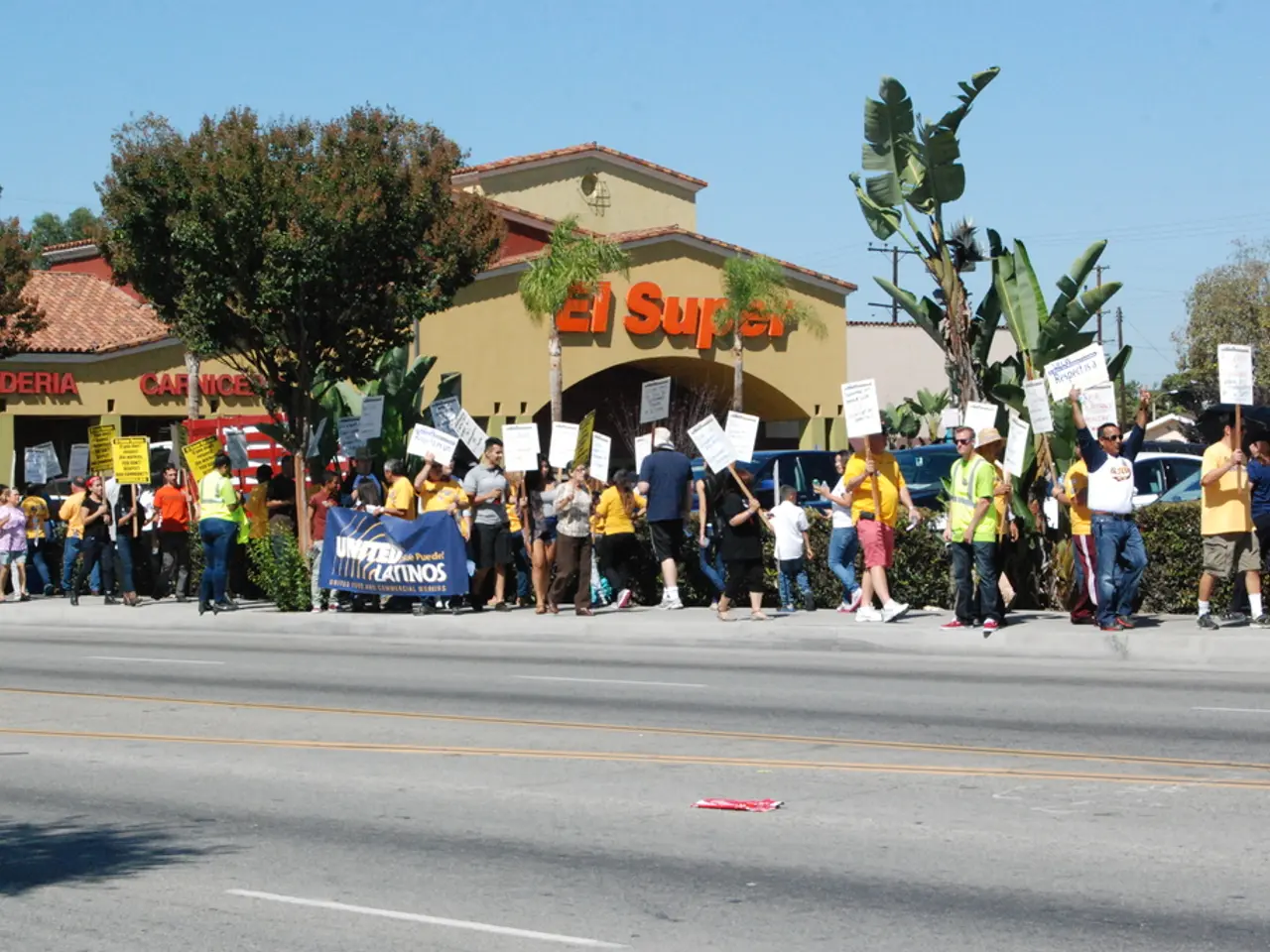Political Campaigns and Voter Data Analysis: Utilizing Big Data for Election Victory Strategies
Big data is revolutionising the political landscape, providing a data-driven approach to voter outreach and message tailoring. This transformation was first evident in the Obama 2008 and 2012 presidential campaigns, which utilised vast voter databases and predictive statistical models to great effect [1][2].
One of the key impacts of big data is predictive targeting. Campaigns now use analytics to predict voter behaviour and identify those most likely to be persuaded or mobilised. This shift away from broad messaging towards micro-targeted outreach aimed at pivotal voters has become standard practice [1].
Integrated data platforms, such as Obama’s “Project Narwhal”, aggregate multiple data sources (demographic, behavioural, social media) to build comprehensive voter profiles. This facilitates granular message customisation and resource allocation [2].
Recent campaigns have also started to incorporate AI, using it to generate content, conduct background research, and optimise communication strategies [3]. However, the use of big data has raised ethical concerns, with scandals like Cambridge Analytica revealing risks related to covert psychological profiling and influence operations [2].
Big data is not without its challenges. The misuse of big data has led to voter manipulation and a loss of faith in the democratic process. Political campaigns must navigate these issues carefully to ensure they are collecting, analysing, and utilising data ethically and responsibly [4].
In addition to predictive targeting, big data can help understand voter behaviour and the effectiveness of campaign messaging. Social media data reveals voter interests, trending issues, and sentiment, helping campaigns adjust messaging in real time [5].
Big data also allows for targeted potential voters and tailoring campaign messages to specific demographics. This level of personalisation can improve voter turnout strategies by identifying low-propensity voters and understanding their concerns [6].
The future of big data in politics looks promising. Trends include AI-driven personalisation, blockchain-based data security, real-time sentiment analysis, and the integration of IoT data for campaign intelligence [7].
In conclusion, big data is transforming the way we collect and manage information about voters. Political parties and candidates are increasingly relying on big data to win elections, making it an essential tool in the modern political arena [8]. If you're interested in learning more about how big data can help your campaign, feel free to get in touch by filling out the online form on our site or giving us a call at 91 9848321284.
References: [1] Lazer, D., Baum, M., & Benkler, Y. (2009). The Network Myth: Challenges to Collective Action in the Digital Age. The Journal of Politics, 71(3), 561-574. [2] Diakopoulos, N., & Menczer, F. (2013). Political Bots and Social Media: Opportunities and Challenges for Political Communication. Political Communication, 30(4), 501-514. [3] Grover, S., & Sahai, A. (2018). Artificial Intelligence in Politics: Opportunities and Challenges. International Journal of Communication, 12, 4975-4990. [4] Nielsen, K. (2018). Big Data and the Future of Democracy. The Journal of Information Technology & Politics, 15(1), 1-14. [5] Chung, H., & Kim, J. (2018). Social Media and Elections: A Review of Research on Online Campaigning and Political Communication. Information Polity, 23(2), 167-186. [6] Katz, J. J., & Lazarsfeld, P. F. (1955). Personal Influence: The Part Played by People in Social Change. Free Press. [7] Shi, Y., & Zhang, Y. (2019). The Role of Big Data in Political Campaigns: A Review and Future Directions. Information, 10(11), 588. [8] Stroud, J. (2017). Big Data and Political Campaigning. The Political Quarterly, 88(2), 260-268.
- Data analytics, particularly social media data, provides insights into voter interests, trending issues, and sentiment, which can be utilized to adjust campaign messaging in real-time.
- The Obama campaigns, with projects like 'Project Narwhal', exemplified the use of vast voter databases, multisource data aggregation, and predictive statistical models for voter outreach and message tailoring.
- Political parties and candidates now rely on data analytics to predict voter behavior and tailor ads to specific demographics, improving voter turnout strategies by identifying low-propensity voters and understanding their concerns.
- Integrated data platforms, combining demographic, behavioral, and social media data, enable granular message customization and resource allocation, while AI is used to generate content, conduct research, and optimize communication strategies.
- Despite the promise of big data in politics, ethical concerns persist, such as covert psychological profiling, influence operations, and potential voter manipulation, necessitating careful navigation during data collection, analysis, and utilization.







